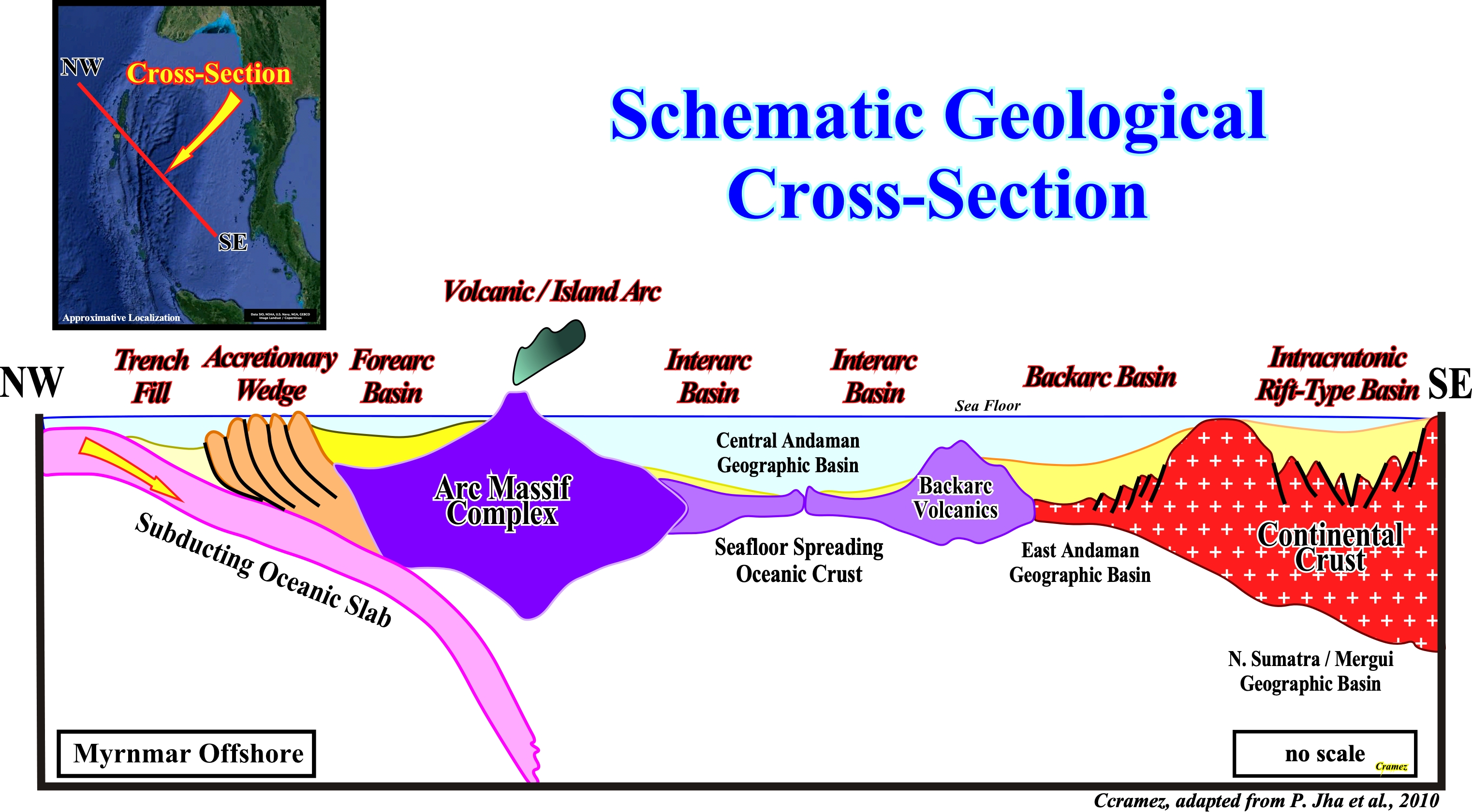

West Thailand Offshore

This NW-SE schematic geological cross-section suggests the more likely geological context of the Andaman geographic basin, i.e., the plunging of Pacific lithospheric plate forming B-Type subduction zone with formation, in the overriding plate of a trench fill, an accretionary wedge, a forearc basin, a volcanic arc, interarc basins with oceanization covered by non Atlantic-type divergent margins, a backarc basin, in which a rifting and sag phases can be individualized, and intracratonic rift-type basins. The knowledge of such a geological context strongly help the tentative interpretation of the Canvas autotraces of the seismic lines of the area. In fact, at least in the oil companies, it is well known that an interpreter (geoscientist in charge of the tentative interpretations of the seismic lines) just recognize, on a seismic line, what he knows. For instance, if he does not know, a priori, what is forearc or an accretionary wedge he can send hours or weeks observing a seismic line, but he never recognizes it. The large majority of the geoscientists follow Karl Popper, i.e., they believe that Theory precedes Observation (Karl Popper, 1934) and not the opposite. Therefore, the knowledge of the location of a seismic line of the autotrace is an indispensable step for, a coherent tentative geological interpretation, i.e., a tentative difficult to falsify, as illustrated on the next plate.

In fact, knowing the geological setting of the area where the original seismic line was shot (previous plate) and its location (shown on the upper left corner), this tentative geological interpretation looks coherent, since this offshore correspond to the stacking of two different sedimentary basins over a basement. The lower sedimentary basin, i.e., the backarc basin, was induced by the lengthening of the continental crust of the overriding lithospheric plate behind the volcanic arc. Two tectono-sedimentary phases are, clearly, recognized on the backarc basin: (i) a rifting phase characterized, mainly, by a differential subsidence, at the base, and (ii) a sag phase characterized, mainly, by a thermal subsidence. As the lengthening, behind the volcanic arc, was strong enough to breakdown the continental crust, i.e., to produce an oceanization (formation of new oceanic crust) and a marginal sea, a non Atlantic-type divergent margin was deposited. As depicted on the geological setting, the backarc and the non Atlantic-type margin were developed within the Meso-Cenozoic megasuture, that is to say, within a compressional context. Consequently, the old normal faults creating during the rifting phase can be, later, reactivated as reverse faults producing tectonic inversions as illustrated in the central part of this tentative.
Send E-mails to carlos.cramez@bluewin.ch with comments and suggestions to improve this atlas.
Copyright © 2001 CCramez
Last update:
2022